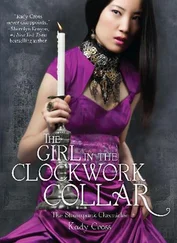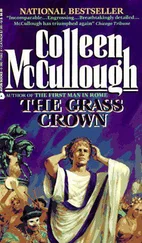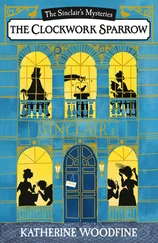The line drawing of a lion-headed woman drew my attention. Beneath it, in flowing, fading text, was a poem or song. It took me a moment to decipher the cramped, ornate entry, and even then, I passed over some words and phrases when they were blotched or unreadable.
Sekhmet, the Goddess of Death, shall be called back to life.
Shall endow Her strength and power upon those deserving.
Gather Her Instruments, meld them whole ——
With the purest of sacrifices shall find the — power.
For the Power of Sekhmet shall rise in vengeance
For the weak and restrained.
A little shiver went down my spine. Last night, the Ankh had referred to “the Power of Sekhmet.”
The day is nigh, the Ankh had said.
What were the instruments?
Gather Her Instruments, meld them whole . . .
I examined the pages, trying to find further reference to the instruments or to the Power of Sekhmet. From what I was able to glean from the book, it seemed to be a collection of Egyptian and Sumerian legends and writings.
After carefully turning one more crisp, browned page, I found an entire leaf devoted to them: The Instruments of Sekhmet: Her Scepter. Her Diadem. Her Cuff. Her Sistrum.
There were drawings of them all. First, the tall scepter with a lion’s head. A detail in the drawing indicated a green gem for the feral feline’s eye, and its long, smooth, mane running the entire length of the staff.
Sekhmet’s diadem appeared to be a delicate, filigreed object—not at all Egyptian in appearance. It looked as if it were made from slender golden curves and twists, but upon closer examination, I realized it too depicted a lion. A feminine snout at the front of the diadem was combined with the leonine mane that curled and curved in an ethereal shape that would hug the crown of the head.
The cuff was a smooth, flat, metal band that enclosed the wrist. The drawing was faded and mottled, making it difficult to see much detail. With the help of the magnifyer and a bit of patience, I was able to discern that the fastener which held the bracelet closed was made of two almond-shaped feline eyes.
The sistrum, a small musical instrument, resembled an ankh in the drawings: it was cross-shaped and had a loop in place of the top, upright bar.
The door to the office opened, and in walked Miss Adler, accompanied by Dylan. He was clean, shaved, and dressed in proper English clothing, with the exception of gloves. I didn’t bother to ask how she had arranged it; there was no sense wasting time on such trivial details.
He looked very British, yet he still seemed . . . different. With his long hair flipping up gently in random places and the slender, blue rubber bracelet he wore, along with the manner in which he stood and moved, he exuded foreignness. He reminded me of a cat reluctantly dressed up in child’s clothing—subdued for the moment, but not in his natural habitat. Not terribly different from how I’d felt at Lady Cosgrove-Pitt’s ball, dolled up and thrust into an unfamiliar environment.
Shifting under my regard, Dylan gave me a sort of lopsided smile and tucked a finger inside the collar of his shirtwaist, tugging sheepishly at the neckcloth.
“I trust you found the reading relevant?” Miss Adler said, redirecting my attention.
“Indeed. I have much to tell you, for this makes what I learned last night clearer.” I launched into an explanation of the events surrounding the Roses Ball and our unexpected adventure. It was with great effort that I managed to keep an accusatory tone from my voice as I described Miss Stoker’s foolhardy actions—from leaving me behind at the top of that long, dark, subterranean flight of stairs, to her bold accusation of the Ankh.
“Fortunately we were able to escape, thanks in part to Miss Stoker’s physical capabilities,” I said, keeping the begrudging tone from my voice with effort.
“The leader’s name was the Ankh?” Miss Adler said.
“Yes. Clearly nothing more than a symbolic name. Ankh, of course, means ‘life’ and is a common icon in Egyptian culture.” I could have lectured further, but Miss Stoker wasn’t present, and surely Miss Adler was already familiar with the symbol.
“And you weren’t certain of the individual’s gender?” she asked.
“Even employing my powers of observation, I could draw no clear conclusion. There were moments when she seemed feminine, and others when I was certain he had to be a male. But aside from that, the most important thing we’ve learned is that there is indeed a society related to Sekhmet. I neither saw nor felt anything that indicated danger to me or anyone else, with the exception of when Miss Stoker drew attention to herself and they attempted to detain us.”
What had also occurred to me, but I chose not to mention, was that the Ankh had seemed to easily make the connection of me to Miss Stoker—simply because we were standing next to each other.
“Thus, if I’m to revisit the Society of Sekhmet, which I intend to do, I must do so clandestinely.” I went on to repeat—verbatim—what the genderless speaker had said during the meeting. “The Ankh promoted female independence, but not once did she speak of the right to vote.”
“So it isn’t merely a suffragette group,” said Miss Adler. “But something more . . . and something that is endangering young women. I will report to Her Royal Highness this evening.”
“The Ankh spoke of Sekhmet helping the young women. She said ‘I, along with the Power of Sekhmet, will help you gain control of your lives in a manner such that women have never done.’ The Power of Sekhmet. That same phrase is notated here in the book. And the Ankh spoke of women being repressed and controlled . . . and in the book, there is reference to the goddess’s power rising up in vengeance for the weak and restrained.”
“I believe,” Miss Adler said, picking up her spectacles, “we have quite a lot of research to do. We must find out more about the Instruments of Sekhmet as well as this implication that she can be called back to life.”
A week ago, I might have found such a conversation ludicrous. Calling a goddess back to life? Absurd. But the young man standing across the chamber from me had opened my eyes to the impossible becoming probable.
I turned to Dylan. “It would be helpful if you showed us where you woke and where the statue of Sekhmet was when you originally discovered it. Your journey and its disappearance—and perhaps this entire case—must be connected.”
My new friend agreed, and we left the chamber. Miss Adler elected to remain behind, explaining, “I have a variety of resources that could assist us—papers, books, scrolls, and other antiquities. I’ll begin to gather them.”
Despite the fact that he’d traveled more than a century back in time, Dylan seemed to know his way through the museum. It was just after closing, so the exhibit halls were empty and silent except for the low rumble of distant cogworks and a sibilant hiss of steam. The lamps had been turned off and a smattering of external light filtered in through high windows.
As we approached the trio of Graeco-Roman salons, I observed the way a sliver of sun made a triangular highlight over the breast of the Ostian Venus. We walked through the first salon, past elegant statues of the Muses, Mercury, and the goat-eared Satyr.
Our footsteps made soft padding sounds as we passed through a little transept approaching the long, narrow Egyptian Gallery. This was where the famous Rosetta Stone, among other antiquities, was displayed. The stone itself was on a circular dais, and a revolving glass enclosure had been erected around it for safekeeping.
“They’ve placed an entire glass case around it now—er, in my time,” Dylan commented as we walked past.
Читать дальше










